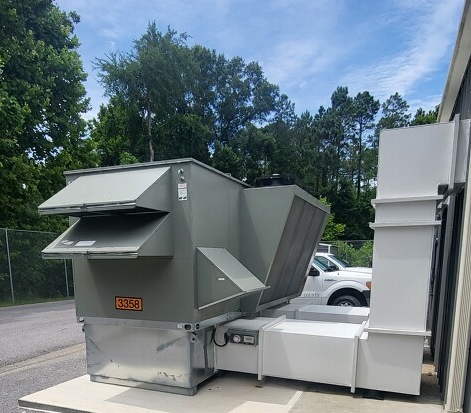American Indian artifacts to be displayed at Meridian venue
Published 4:00 am Sunday, February 14, 2016
Although pre-historic tools flaked from stone are commonly found in most of the Old World, such artifacts found in the Americas are generally considered to be the finest in the world.
Virtually all flaked stone tools are manufactured from cryptocrystalline quartz found in the form of cherts and flints. These lithic materials have the important principle of a conical fracture when flakes are knapped from the core rock. The manufacture of stone tools from quartz based rock is commonly called “flint knapping.” The best image to visualize for the principle of conical fracture is that of the cone shaped piece of glass that flies from the opposite side of a piece glass struck by a BB.
Trending
The Americas were first inhabited by Stone Age man more than 13,000 years ago, although a precise date of initial occupation is unknown. The first well known early American culture was the “Clovis culture,” which used Clovis fluted projectile points and knives during the period of approximately 13,000 to 11,000 years before present (BP). There were, however, certainly earlier “pre-clovis” cultures in the Americas.
The Clovis people were followed by later Paleo-Indian cultures which continued to use similar tools and projectiles points throughout the terminal Ice Age and through the extinction of Megafauna such as mammoth and mastodon, approximately 10,500 BP. The Paleo-Indians were followed by the Archaic Indians, who continued to live a similar nomadic and semi-nomadic life style. Archaic cultures continued from about 10,000 through 3,000 years BP, when important changes, such as initial agriculture, initial pottery usage, and transformation from a spear thrower call an Atl-Atl to the use of the bow and arrow, began to occur. The most recent American Indian periods were the Woodland and Mississippian periods.
An interesting characteristic of American Indian artifacts is that the earlier ones of the Paleolithic and Archaic Indians, are not only the generally larger, but are the best made. Clovis points, as well as the other Paleo-Indian points, and many of the Early Archaic styles, are sheer works of art. Native Americans commonly choose the best of materials, and intentionally used materials that had vibrant colors, to create tools that were not merely utilitarian. It was as if they were out to impress others with their craftsmanship and beauty of their finished knives and projectile points.
It is likely that a primary reason why American Indian artifacts are so finely made in comparison with those of Old World cultures is that the importance of a hunter – gatherer life style persisted longer here than in Europe and in Asia. This conclusion is supported by the fact that the Woodland and the Mississippian artifacts are not as well made as those of the Paleolithic and Archaic periods. It is sometimes hypothesized that the reason that there are not many fine stone artifacts found in Asia is the presence of bamboo, which was useful for tool manufacture in place and instead of cryptocrystalline quartz, which is rare in China.
Mississippi is a State in which many fine and beautiful Indian artifacts are found. Predominate materials for American Indian artifacts in Mississippi are Citronelle Cobble Chert, which is a brownish to yellowish stream based cobble that turns red when heat treated, and certain others are called Pre-loess cobble cherts. The latter were deposited hundreds of thousands to millions of years ago, primarily within the Mississippi River basin. Also a number of Quartzites, sometimes called “sugar quartz,” were utilized; such as Talahatta Quartzite from Central Mississippi, Kosciusko Quartzite from Northeast Mississippi and Hattiesburg Quartzite from Southwest Mississippi.
Pictured are three artifacts from my personal collection found in the State of Mississippi. The first is a Clovis spear point found in North Mississippi and made from Upper Mercer chert quarried in Coshocton County, Ohio. It was common for the Paleo-Indians to make their points from “exotic” materials from quarries far away. Their nomadic lifestyle meant they traveled far in small bands, with their tools in hand. This Clovis point has an age of approximately 13,000 years BP. The larger stemmed spearhead is a Little Bear Creek point made of a node of Talahatta chert found within a Talahatta Quartzite formation. It would have been prized material to the ancient knapper. It has an age of approximately 4,500 years BP. The third is a San Patrice point made from honey colored translucent South Alabama agate and having an age of about 9,500 years BP.
Trending
For more formation call Bill Breidinger at 601-635-3222 or email: billbreidinger@yahoo.com.
• Robert E. O’Dell, vice president of the Magnolia State Archaeological Society.
Want to go?
What: Mississippi Native American Indian Artifact Show
When: Saturday, from 8 a.m-3 p.m.
Where: Frank Cochran Center, 1725 Carousel Drive
Admission: Free
Hosted by the Magnolia State Archaeological Society





